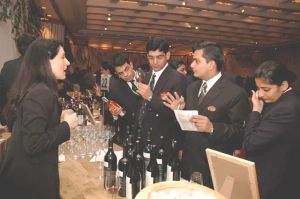Study: Visual Sweetness on a Wine Label increases Buying Potential in Retail
Study: Visual Sweetness on a Wine Label increases Buying Potential in Retail
The Study, published recently in the International Journal of Contemporary Hospitality Management claims that though the purchase intent is increased, the same consumers may not be willing to pay a higher price for wine with a sweetness scale because the scale might make the product appear to be lower quality.
“Our research shows the label is a small, crowded piece of real estate in which heuristics, like a visual scale, may help to close the sale on that bottle,” says Donna Quadri-Felitti, Marvin Ashner Endowed Director and associate professor at the Penn State School of Hospitality Management, who led the research. “The best place to describe the product’s tastes to buyers is on the label when the consumer has the bottle in their hands”, she says.
Donna added, “our research shows the label is a small, crowded piece of real estate in which heuristics, like a visual scale, may help to close the sale on that bottle.”
The researchers conducted two independent studies. First, they surveyed 200 adults in the United States via Prolific, a hospitality consumer research platform, to investigate the effect that a sweetness scale had on consumers’ intent to purchase.
Participants were presented with one of two versions of a label for the same wine. The first version displayed text describing the sweetness level, while the second version featured a visual scale of sweetness levels. Participants were also asked to indicate their purchase intention after seeing the label and how often they consumed wine, to determine if they were novices.
The second study was to gauge how sweetness affects willingness of the consumer to pay. In this studies, a different group of 200 adults in the US, participants were presented with images of a wine label that either had a sweetness scale or a text description of sweetness. They were asked about their willingness to pay for the product.
“Though wine novices are more likely to purchase wine with a sweetness scale rather than text, they are unwilling to pay more due to low perceived quality,” says Anqi Luo, a team member who earned her PhD in hospitality management at Penn State in 2022 and is now a research assistant professor at the Hong Kong Polytechnic University
Luo says, ‘the sweetness scale makes it easier for consumers to understand what is in the bottle. When product information is easier to interpret, it may diminish perceived exclusivity and lead to lower perceptions of value.’
Study as a Marketing tool
The researchers feel that the wine producers should consider these findings when marketing to consumers. For example, if a producer sells high-priced wines, it could be beneficial to bypass using a visual sweetness scale on labels and instead use terminology, such as “semi-dry,” on the label. On the other hand, it could be beneficial to include a sweetness scale if the target market is novices or those looking for cheaper, entry level wines.
“There has been an increase in competition for alcohol consumers as new products have emerged in the last decade with such drinks as alcoholic seltzers, ciders and meads. Wine sellers seek ways to communicate the marketable attributes of their wines by multiple means in order to stimulate the trial and acceptance of their products by more consumers,” says Donna.
Anne Mattila, Professor of Lodging Management at Penn State, also collaborated and coauthored this research, according to the Article from Penn State. Read details here
Subhash Arora



